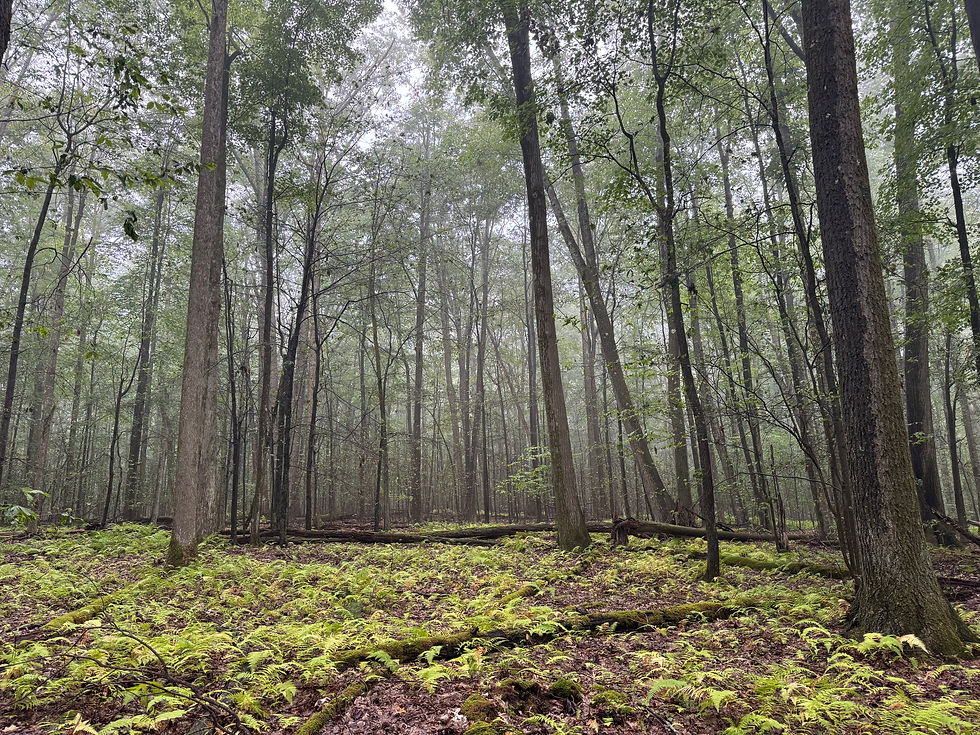The Fire Triangle in Action
- Jason

- 1 day ago
- 2 min read
Troubleshooting Why Your Fire Won’t Catch
There’s a reason fire has always been a survival benchmark—it’s equal parts comfort, utility, and morale booster. Out in the backcountry, a good fire boils water, dries soaked socks, and reminds you you’re still in control of your environment. But sometimes, despite your best efforts, your fire just won’t catch.
When that happens, it’s not bad luck—it’s the Fire Triangle reminding you of its rules.

The Fire Triangle: Three Parts, One Flame
A sustainable fire requires:
Fuel – Something to burn: tinder, kindling, logs.
Heat – A spark, flame, or ember strong enough to ignite the fuel.
Oxygen – Airflow to keep combustion alive.
Take away any one of these, and your fire dies before it lives.
Common Fire Failures and Fixes
1. Fuel Problems
Issue: The wood’s too wet, green, or simply too big to catch.
Fix: Start small. Feather sticks, birch bark, fatwood shavings, or cotton balls with petroleum jelly will light long before a damp log does. Build upward—tinder first, then pencil-sized sticks, then larger fuel.
Trail Tip: In wet conditions, split logs to get to the dry inner core. Dead branches still hanging on trees are often drier than what’s lying on the ground.
2. Heat Problems
Issue: Weak spark, damp matches, or a dying lighter flame.
Fix: Carry redundancy. Always have at least two ignition sources (lighter, ferro rod, stormproof matches). If one fails, you’re not out of the fight.
Trail Tip: Ferro rods excel in wet, cold conditions. Practice before your trip—technique matters.
3. Oxygen Problems
Issue: Smothering the flame with too much fuel or poor airflow.
Fix: Think architecture. A teepee fire structure lets flames climb. A log cabin gives steady airflow. Even the lean-to fire works with a built-in windbreak. Adjust the design for the conditions.
Trail Tip: Don’t forget to leave space at the base for airflow—most “failed” fires are actually suffocated fires.
When NOT to Light a Fire
Sometimes the smartest fire is no fire at all:
High winds that send embers flying.
Dry conditions under a fire ban.
Low visibility if you don’t want your location known.
Always weigh safety and regulations before striking that match.
Lessons from the Wild
On one winter trip, I thought I had everything dialed in. But deep snow buried most of the dry wood, and my gloves made fine motor skills impossible. I tried rushing, skipped prep, and nearly paid the price—blood on the snow after a careless slip with my knife. The lesson? Fire prep isn’t glamorous, but it’s the difference between warmth and misery.
Fire doesn’t forgive shortcuts.
Final Checklist: Fire-Ready in the Wild
Before you strike that match, ask yourself:
Do I have dry tinder stored in a waterproof bag?
Are my ignition sources reliable and redundant?
Did I build a fire lay that allows airflow?
Do I know the fire restrictions for this area?
If you can answer “yes” across the board, you’ve stacked the triangle in your favor.
Fire isn’t just about flame—it’s about control. Master the triangle, and you won’t just light a fire… you’ll keep it alive.




Comments